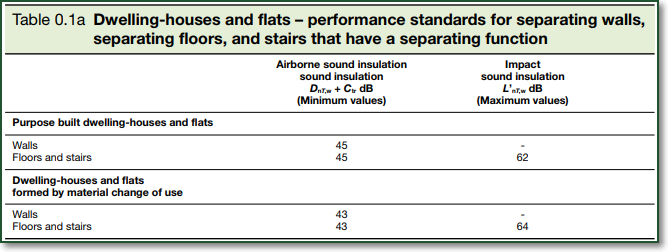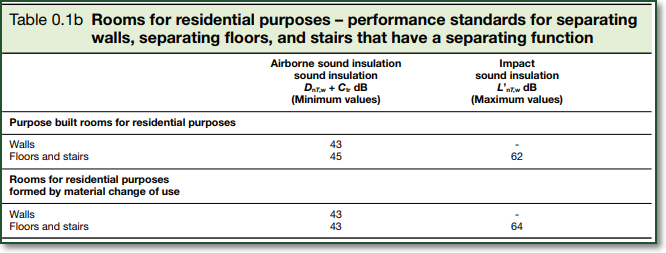
Planning early to reduce your development’s Acoustic impact is sound advice.
All domestic developments will need to meet certain compliance levels for sound insulation. This can be proven by either sound testing or using Robust Details. The levels of sound reduction are dictated in Approved Document E of the Building Regulations. Improved sound reduction targets are often set by other standards such as BREEAM and Code for Sustainable Homes.
The current edition of Approved Document E – Resistance to the passage of sound (2003 Edition incorporating 2004, 2010, 2013 and 2015 amendments), has been updated to include a new reference to standards for schools.
Sound testing, or pre-completion testing must be carried out on new build and refurbishment projects where Robust Details are not used.
A new build property will require either an Airborne test or an Airborne and Impact test depending on its type and location.
- Airborne tests are carried out on all separating walls between habitable rooms of flats and houses.
- Airborne and Impact tests are carried out on the separating floors between habitable rooms of flats.
Performance Targets – Approved Document E sets out the sound insulation targets that are need to be met for separating walls, separating floors, and stairs that have a separating function in Table 0.1a.

Table 0.1a Approved Document E
Target sound insulation values for Rooms for residential purposes is set out in Table 0.1b.

Table 0.1b Approved Document E
All of our sound tests are carried out in accordance with ISO 140-4 and ISO 140-7. Our acoustic engineers are registered members of ATTMA Sound Insulation Testers Scheme.
- All ATTMA members use the ATTMA Lodgement portal to record their sound insulation tests which results in a common report format which complies with ISO 140-4 & 7, with calculations conducted in accordance with ISO 717-1 & 2.
- All tests are notified in advance of testing, allowing ATTMA to carry out unannounced site audits as part of its independent 3rd party accreditation of testers.
- All ATTMA members are required to upload insurance and calibration documents to the ATTMA Sound Testers Lodgement System.
- All ATTMA members are audited each year in accordance with the National Occupational Standards
https://www.attma.org/members/sound-insulation-testing/united-kingdom/
Get in touch or send an email if you need expert advice on Sound Testing at any stage of your development and one of the team will respond within 24 hours.

